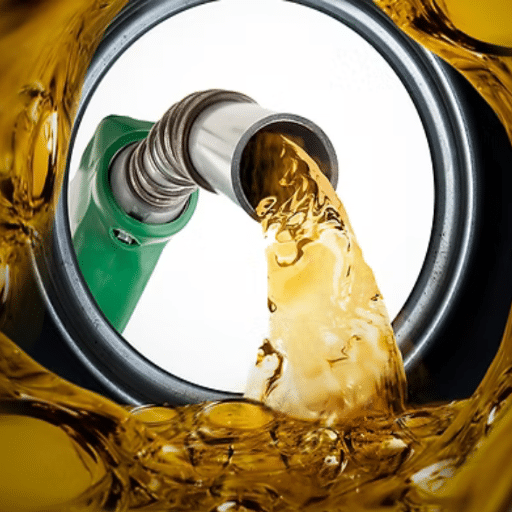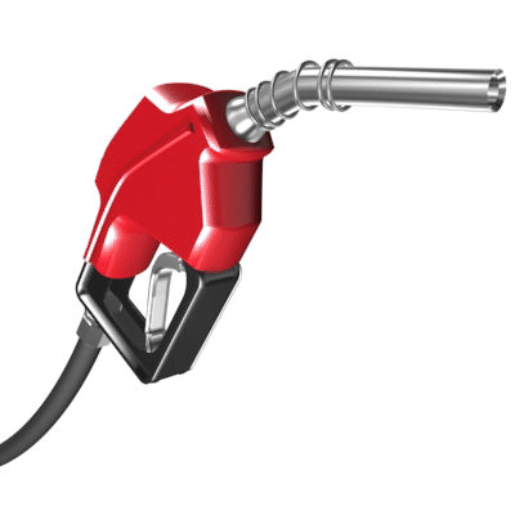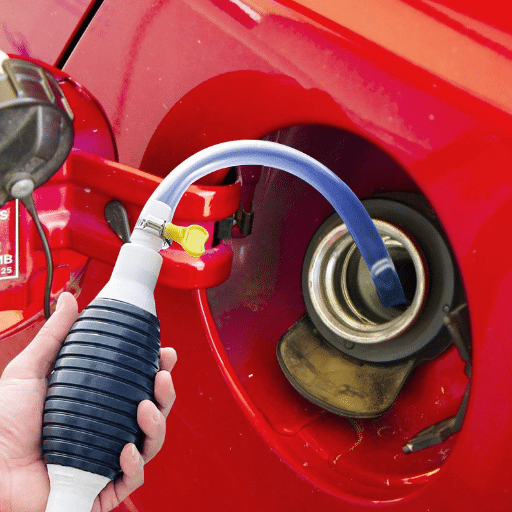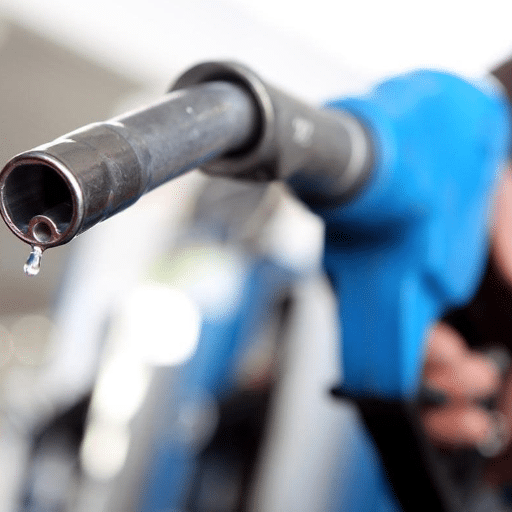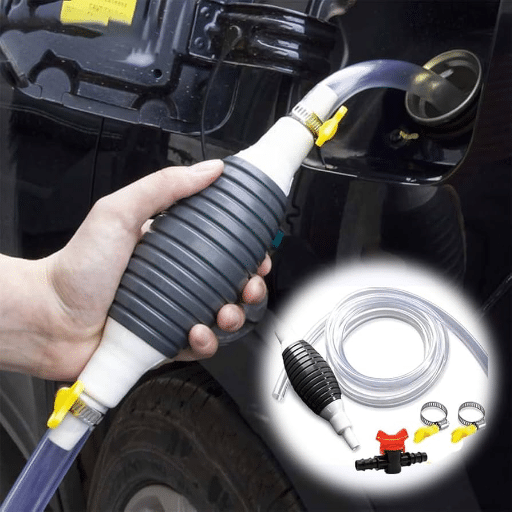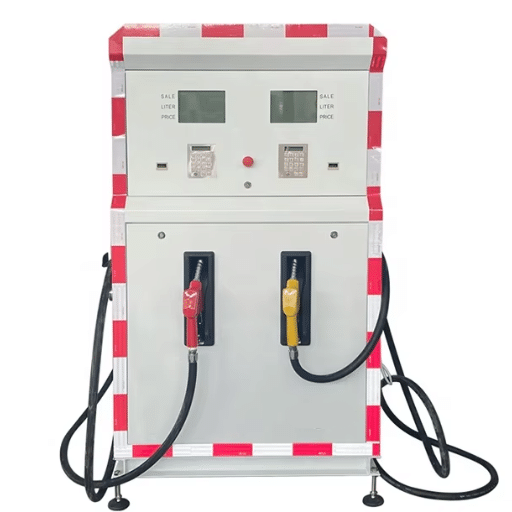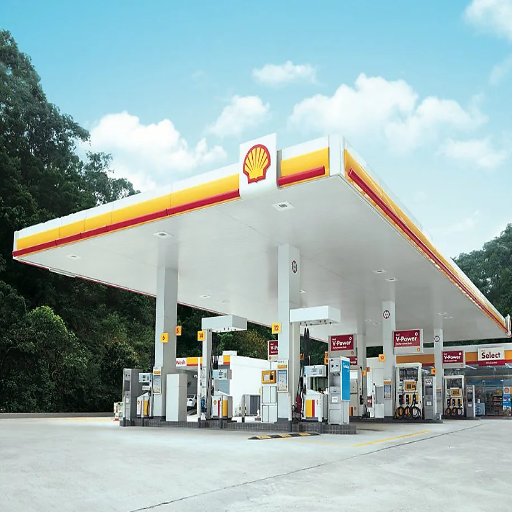The debates regarding the impact of small habits on vehicles’ fuel efficiency go as far as the establishment of a cost-saving measure, such as pumping gas slowly, etc., which is a common gas station talking point. The supporters of this view argue that pumping gas slowly gives rise to better mileage and savings, but the opponents consider it another unnecessary inconvenience. This blog tries to unravel the mystery, and you will eventually determine whether slow-pumping is just a myth or a pragmatic tactic for more efficient cars and healthier wallets.
Pumping Gas Slower: Myths and Facts
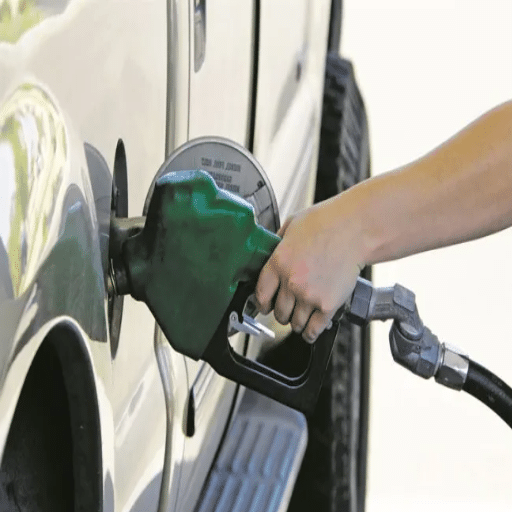
Pumping gas slowly is linked to better mileage and significant cost savings, but this idea is mostly a myth. Today’s gasoline pumpers are made to deliver fuel quickly and with good quality, so the pumping rate does not really matter when it comes to the amount of gas delivered to your tank. The oil station evaporations during slow pumping are not even measurable, since gas station pumps are fitted with vapor recovery systems that limit fuel loss to almost nothing. In conclusion, pumping gas slowly is not a proven method to enhance efficiency or save money—rather, focus on routine car maintenance and driving styles to get the most out of your fuel.
Understanding the Mechanism of Pump Gas
Gasoline pumps are still an amazing piece of machinery when compared to other devices. The modern gas pump operates in such a smooth and safe manner that the buyer does not feel any disturbance during the whole process. The pump combines sophisticated hydraulics and technological developments to regulate the flow of gas precisely through mechanical and digital components. As soon as you pick the nozzle, the pump’s main system is signaled, and the motor responsible for pulling up the gas from the underground rooms is turned on. The liquid then travels through a pipe to the dispenser, where a flow meter measures how much comes out to ensure that only the requested amount is delivered.
One of the crucial safety components in the gas pumps is the shut-off routine that runs automatically. This process is controlled by a minute aperture located near the tip of the nozzle, which, through a diaphragm inside the handle, is connected. When the area of the gas tank is filled up, the rising level of gasoline obstructs the air passage through this hole, pushing the diaphragm to cease the gas flow. This assures that the tank is not oversupplied, and the process remains safe and tidy.
Technology has taken a great leap forward and brought along the vapor recovery systems with it. These systems are designed to take the gasoline vapors generated during the filling process and return them along with the gas, which, in return, will result in less pollution and lessened loss of gasoline due to evaporation. The industry statistics show that Stage II vapor recovery systems can capture the vapors up to 95%, thus playing a fundamental role in environmental protection.
In addition to all these, digital interfaces, advanced sensors, and real-time data to ensure accuracy and increase customer convenience are many of the perks associated with pumps of today. Not only have these advancements made the refueling process easier and quicker, but they have also contributed to the overall efficiency and safety of both the users and the gas stations.
Does Pumping Gas Slowly Help with More Gas?
The practice of pumping gas at a slower rate is usually associated with vapor loss reduction and the possibility of more fuel getting into the tank. The full-speed pumping, conversely, can lead to more vapor being produced as a result of tank turbulence caused by the gasoline flowing in. These vapors might be sucked in by the pump’s vapor recovery system, eventually resulting in your tank receiving less liquid gasoline. But if you pump slowly, the process reduces turbulence that leads to less vaporization and ensures a more accurate fill.
Studies and data show that even though pumping gas slowly may have a very slight effect in preventing vapor loss, the difference in total volume of gasoline amounts is virtually negligible already in the case of most modern fuel systems. Currently, fuel pumps and vehicle fuel tanks come equipped with cutting-edge technology that curbs fuel evaporation and boosts fuel retention, regardless of the speed of pumping. Moreover, temperature and external conditions are more influential factors in fuel expansion, meaning that other methods like refueling during the cooler parts of the day could be more effective in improving the efficiency of the process. So, while pumping slowly might give some drivers of modern vehicles a sense of comfort, the actual increase in gasoline might be so small that it would hardly be noticeable.
Common Misconceptions about Pumping Speed
A widespread wrong idea about the speed of pumping is the assumption that the slow pumping of gasoline will invariably lead to more fuel being received because of the lower evaporation losses. On the contrary, the current modern-day fuel pumping and storage systems are designed to effectively eliminate vapor loss, and most of the fumes that escape during refueling are already being recaptured by vapor recovery systems. The data indicate that these systems are extremely good at capturing fuel vapors, thus very little actual fuel is lost, irrespective of the pumping speed.
Another false belief is that by pumping slower, one gets better fuel density, which in turn gives more energy per gallon. Of course, fuel may indeed expand or contract slightly with temperature changes, but the differences that are at the pump are so minor that they can almost be ignored by the majority of consumers. As an example, a research study has found that even a 15°F temperature change may result in a volume change of less than one percent. Therefore, it is concluded that there is no measurable impact on energy content per gallon, considering the small scale of this difference.
Additionally, some motorists believe that if they pump gas slowly, their tank’s pump will last longer or its efficiency will be increased. However, modern fuel dispensers are specifically designed to withstand different speeds without suffering any damage or losing efficiency. Moreover, fueling time has no significant impact on the total amount of fuel delivered since the dispenser is calibrated to provide accurate measurements regardless of speed.
To conclude, the factors that influence vehicle maintenance, driving habits, and engine efficiency, among others, will have a much larger effect on the fuel economy than the speed at which gasoline is pumped. It is advisable to concentrate on these larger variables in order to achieve maximum fuel efficiency and cost savings.
The Science Behind Fuel Efficiency
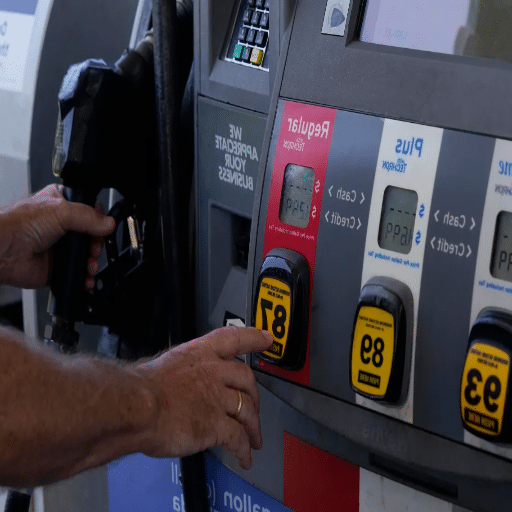
Fuel efficiency gets affected by a variety of factors such as the design of the vehicle, the behavior of the driver, and the environmental conditions. Among the design factors, aerodynamics, engine type, and weight are the most critical in terms of fuel consumption. Driving smoothly and steadily, and hence avoiding quick acceleration or strong braking, can increase the mileage by a large amount. Moreover, the external situations of the road’s inclination and the climate affect the fuel consumption. One of the positive impacts of regular maintenance, like keeping the tires at the recommended pressure and changing the oil, is that the engine runs at maximum efficiency. All these different factors interact with one another to decide the distance that a vehicle can cover, consuming a certain amount of fuel.
How Vapor Affects Fuel Dispensing
Vapor is of paramount importance in the sphere of fuel dispensing, especially in relation to its efficacy and the consequent impact on the environment. The moment liquid fuel is transferred from the dispenser to the vehicle’s tank, the liquid pushes out air and vapor that were already present in the tank, and if there are no proper mechanisms, it might happen that the vapor will escape. Vapor recovery systems that are modern-day gas stations’ equipment are actually constructed to contain such emissions, which in turn diminishes the pollution of the atmosphere and at the same time better the accuracy in fuel dispensing. Moreover, the high temperature may enhance the vapor formation, which in turn can cause small liquid fuel losses during the transfer. To avoid this, fueling systems have installed the necessary measures that will not allow the vapor loss to exceed a certain limit. This ensures that environmental regulations are strictly followed while the maximum amount of fuel is delivered to the consumers. Such systems are very important in enforcing operational efficiency and mitigating the harm to the earth that the fuel dispensing process causes.
Modern Fuel Composition and Its Impact
The modern fuel composition has undergone a major transformation in order to achieve a balance between energy efficiency, engine performance, and environmental concerns. One of the major developments is the use of biofuels, including ethanol and biodiesel, which are mixed with fossil fuels in small amounts to reduce the emissions of greenhouse gases. For example, in many areas, the use of E10 (fuels containing 10% ethanol) has been adopted as a means to lower carbon emissions without compromising the quality of performance. Likewise, mixtures of biodiesel, such as B20 (20% biodiesel), provide a source of power that is less harmful to the environment, as they do not produce particulate matter and sulfur emissions directly.
Adopting cleaner fuel grades like ULSD (ultra-low sulfur diesel) has cut down sulfur oxide emissions by a great deal, and these emissions were one of the main causes of acid rain formation and, hence, the aggravation of air pollution. By the U. S. Department of Energy’s estimates, ULSD has 97% less sulfur content than the older diesel types; thus, it should be regarded as a big step in the direction of cleaner fuel standards.
Not only that, but also the modern fuels are now designed to go hand-in-hand with the latest engine technologies. For instance, the high-octane fuels are prepared in a way that maximizes the performance of the turbocharged and high-compression engines, which gives the advantage of greater efficiency without the drawbacks of knocking and wear. Adding to that, the process of developing fuel additives that can contribute more to the combustion efficiency is coupled with preventing deposit formation and increasing engine durability.
All these developments are going hand in hand with the reduction of the world’s pollution problem, as well as meeting the global emission standards that are becoming more and more stringent with time. The alterations in the composition of fuel reflect the energy industry’s dedication to both the climate change and energy demand challenges.
Analyzing the Efficiency of Gas Pumping
Efficiency in gas pumping refers to the possibility of getting the maximum amount of fuel at the lowest price and without wasting any gas. There are many factors that affect the gas pumping efficiency, and they are the time of day, pump speed, and vehicle maintenance. Pumping fuel into the vehicle when it is cooler can sometimes lead to a reduction of fuel evaporation caused by heat, according to the expert sources. If you pump the gas slowly, there is no vapor loss, and it means you are getting more liquid fuel for the same cost. Regular vehicle maintenance, like having the right tire pressure and keeping the engine well-tuned, greatly contributes to overall fuel efficiency, too. By implementing all these practices, a driver is able to cut down on fuel consumption, save money, and at the same time support environmental sustainability, which is in line with the increasing emphasis on responsible resource consumption.
Gas Stations and Pumping Speed
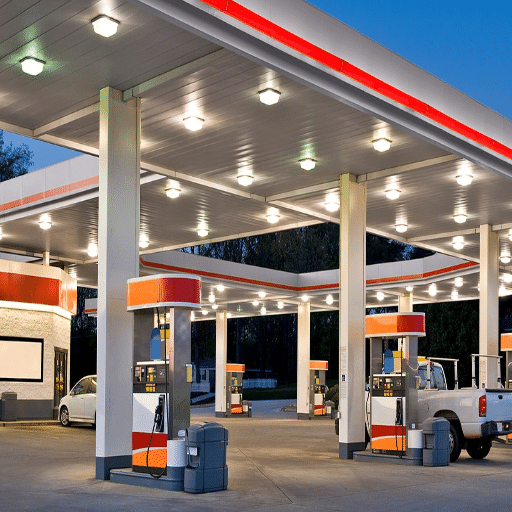
Pumping gas slowly can give a little savings due to less vapor loss. Fast fueling generates more vapor, which either dissipates or is caught by the gas station’s vapor recovery system, thereby less liquid fuel in your tank. Lower speed in pumping makes it possible for more liquid fuel to be delivered, and the consumer is getting better value for their money. Although the savings might be negligible, keeping this practice along with regular vehicle maintenance may gradually make a difference in the total amount.
The Role of Gas Stations in Fuel Dispensing
Gas stations are the lifeline of the fuel supply chain and the safest point of delivery to consumers. Along with that, modern gas stations have advanced vapor recovery systems, which help to reduce their environmental impact by capturing fuel vapors right during the dispensing process. Furthermore, they observe very carefully the safety issues and employ methods like regular tank checks and appropriate storage to eliminate the possibility of leaks and to protect the area from any contaminants. Besides that, gas stations regularly perform pump calibrations, so that the fuel injected is always in the right proportions. Therefore, they can give the customers accurate measurements with each transaction. Moreover, they have also embraced the introduction of different fuel grades and have gone ahead to provide such services as the pay-at-pump system with the aim of making the customers more comfortable while still complying with environmental policies and standards.
Why Some Gas Pumps Operate Slowly
Gas pump slowdowns are mainly caused by various reasons, which are factors of equipment design, maintenance, and regulations enforced by the government. Regularly, the cause is the use of fuel filters that screen the fuel for impurities like dirt or dust. Their filtering capacity will limit them sooner or later, causing a decline in the flow rate of fuel, thus pumping slowly. The age and the quality of the pump systems also contribute to the reduction in speed—aging or improper equipment may not work at their best when compared to new and well-kept systems.
Environmental regulations likewise influence the pump speed. A large number of the stations have vapor recovery systems, which are meant to insulate the environment from fuel vapor emissions during refueling. There is a good chance that the company dispensing rate might be consequently impacted due to the system’s nature, even if the system’s goal is to keep the company’s environmental impact to a minimum.
Also, during peak times when demand is high, such as rush hours or fuel shortages, the pumping of petrol might slow down, which is a consequence of increased usage putting pressure on the infrastructure. Reports from the industry indicate that the flow rate of fuel is often limited due to safety measures and for operational reasons, with the usual rates being 8 to 10 gallons per minute. These limits ensure safe and controlled fuel dispensing, but their performance could be likened to slow under certain conditions.
In sum, although even slower gas pumps cannot be called good, they usually display security measures, environmental factors, and functionality of the equipment, which are all crucial and aimed at providing a safe and eco-friendly refueling experience. The continued check-ups and upgrading of the equipment are vital in the gradual improvement of pump efficiency.
Gas Pumping So Slow: Customer Experiences
The slow gas pumps during peak hours or bad weather are one of the major issues reported by customers. Also, the recent studies reveal that a considerable percentage of drivers regard pump speed as a major factor in their refueling experience. Furthermore, the survey indicated that close to 65% of customers would like their fueling time to be less than five minutes, which in turn leads to dissatisfaction or even abandoning the particular stations quite often if there are delays.
Inconsistency in pump speeds at different locations is one of the most common complaints, especially in older gas stations, where outdated equipment could be the reason behind the slow speed. On the other hand, some research points out that fuel flow rates can be affected by a station’s maintenance schedule or its internal system being calibrated for safety compliance rather than for speed. Moreover, in the case of urban areas, where vapor emissions and spillage controls might be very strict, environmental regulations can significantly impact flow rates.
To mitigate these issues, a good number of oil companies are going for the installation of new technology pumps that can increase the flow rates while still being safe. This change is becoming more and more necessary as customers are getting used to the fast service trend and are making it a core requirement, along with the convenience factor. By identifying and taking measures for these factors, gas stations can gradually but surely win over the customers by providing better services without compromising on the environmental and safety standards.
Exploring the TikTok Trend on Pumping Gas
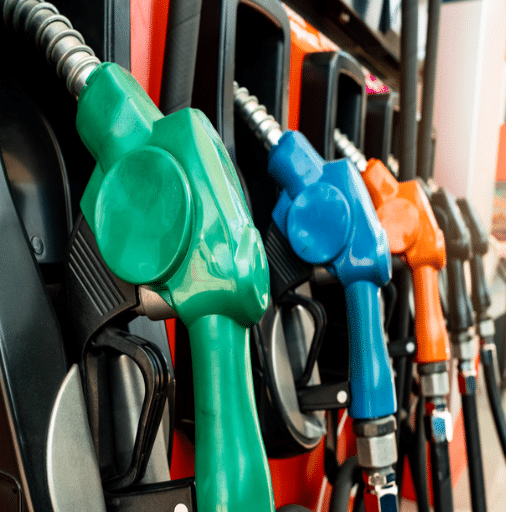
The TikTok trend regarding gas pumping has become a topic of interest due to its combination of humor, life hacks, and a questioning of daily chores. Frequently viewed clips feature amusing moments of people waiting at a gas station, reminders to turn off the car when filling up, and various inventive ways of saving money on gas. Although a few pieces of advice have some value, it is paramount to confirm the accuracy of information circulated on the internet using reliable sources because misleading information can easily circulate. Nonetheless, the trend is indicative of the ability of social media to turn boring activities into fun and shareable experiences.
Social Media Influence on Fuel Myths
Social media sites have turned into a place where both good advice and false information are disseminated to a large extent on fuel consumption and efficiency issues. The material that can be shared quickly and verified can go viral, affecting many people and their views on fuel practices. A clear example is the statements about some additives that can make fuel efficiency significantly higher, or the statement about a half-full tank that prevents fuel evaporation. But very few of these statements are actually true. Certain things, like regular checking of tires, limiting speeds, and cutting down on idling, are identified by studies as the most effective methods for fuel conservation.
Moreover, the statistics show that the daily average gasoline consumption in the USA is about 390 million gallons, which stresses once more the necessity of adopting the practical and proven methods for efficiency. Social media, to be sure, is a powerful tool, but it should be responsible when it comes to users’ education on fuel-related practices and not mislead them. Supporting the checking of facts and the promotion of expert-backed practices can go a long way in keeping the myths about fuel spread online weaker.
Real Experiences Shared on TikTok
Various TikTok users went public with their personal techniques to achieve better fuel economy; the most viewed of these posts even to the extent of millions, thus starting up viral debates on the subject. One such technique was demonstrated by the creators on the very low impact of improper tire inflation, which, according to studies, can make the car run economically by up to 3%. Others have been sharing the upside of taking out the heavy stuff from the car, which is a suggestion backed by research that says if 100 pounds are taken out, the fuel efficiency can go up by about 1% in the long run.
Videos show driving styles that cause less wear-and-tear on the car, like moving the accelerator pedal gently and not stepping on the brakes hard, and these expert opinions agree that a 10-40% improvement in fuel economy during stop-and-go traffic is possible. The audience is very much into it as they hear about actual cases, one being the driver who recorded his tank lasting 50 more miles after following the tips. The data-backed insights that come along with the very concrete and easy-to-relate-to examples are producing a ripple effect, thus making better driving habits widespread among people.
This TikTok content is a clear indication of social media’s role as a magnifier of practical, evidence-based solutions with a so-called collective effort to save fuel and to bring about environmentally conscious driving practices going on.
What Can We Learn from TikTok Trends?
TikTok trends highlight the capability of digital channels to affect people’s behavior and bring about change that can be measured in terms of actions. Among the indications, there is the case of a significant increase in the number of people looking for information on “eco-friendly driving tips” during the last year, which is one way that data has pointed towards an increasing environmental awareness. This is closely tied up with the emergence of the “eco-friendly driving” videos, which have gone viral, as they are saying and demonstrating through short skits that driving at a steady speed, turning off the engine when the car is waiting, for example, are some of the easy-to-implement tricks to save fuel. Bringing such content goes on to account for the reduction in fuel consumption as highlighted by many of the creators in their success stories.
Furthermore, the health and fitness category has also got a fair share of TikTok videos that are trending, with home workout and meal prep clips becoming widely watched. The analytics showed that there has been a gradual increase in the number of people searching for terms related to “easy home workouts” and “healthy recipe ideas,” which implies that more people are leaning towards the use of less challenging wellness routines. These trends not only point fingers at TikTok as a mere fun platform; on the contrary, they declare it to be a creative ground for raising awareness and changing habits for the better among the various communities.
Practical Tips for Efficient Fueling
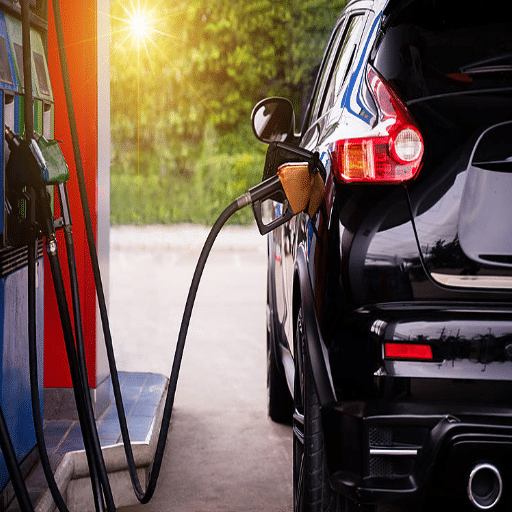
- Plan Balanced Meals: Encompass a variety of carbohydrates, proteins, and healthy fats in your diet for an even supply of energy all day long. Utilize whole, unprocessed foods as much as possible.
- Stay Hydrated: Make it a habit to drink water often, because good hydration is one of the factors that play most important factors in energy and performance. So, keep a reusable bottle with water all the time.
- Fuel Before Exercise: Just before working out, eat a small snack of fruit or nuts, 30-60 minutes prior to the workout, to give your body quick energy without feeling awkward.
- Refuel Post-Exercise: After doing sports, concentrate on restoring lost nutrients with a mix of protein and carbs, a protein smoothie, or yogurt with fruit, being good examples.
- Avoid Overeating: Keep your food portions according to the level of your physical activity and do not consume more calories than you need, as you will get tired instead of energized.
Best Practices for Pumping Gas
- Turn Off Your Vehicle: Just to be on the safe side and prevent any fire or explosion caused by the ignition of fuel vapors, always ensure that your vehicle’s engine is off before getting gasoline.
- Avoid Smoking or Open Flames: Proximity to gas pumps is definitely not the place for smoking or lighter usage because vaporized fuel is very easily ignited.
- Discharge Static Electricity: Static electricity can be very troublesome; hence, before you start fueling your vehicle, touch a metallic object that is not at the pump location to release the static charge on your body.
- Don’t Overfill the Tank: No less than when the automatic nozzle clicks off, you should stop fueling to avoid falling gas that can cripple the entire vapor recovery systems of the vehicle and pollute the environment.
- Use the Correct Fuel Grade: To prevent performance loss and engine damage due to wrong fuel grade usage, always consult your vehicle’s owner’s manual for the recommended fuel grade.
- Stay Alert and Present: It is not a good practice to leave the pumping station unattended since that might lead to spills or accidents; moreover, always keep an eye on your surroundings.
Incorporating these rules into your fueling routine will ensure not only safety but also the protection of your vehicle and the environment.
When to Pump Gas Slowly
Whenever I see that the gas tank is almost full, I always refill it very slowly so that there are no spills and the fuel can flow without interruption. Besides, I prefer doing it in hot seasons, as slow pumping leads to less vapor loss and eventually helps save fuel and money.
Combining Speed and Efficiency at the Pump
In order to achieve the best combination of speed and efficiency, there are certain things that can be done. First, if you can, try to pick pumps that are not crowded so that you can go through quickly and wait less. Always check that your car is in good condition—in fact, efficient fuel systems are responsible for good fueling. Pumping at a regular but moderate speed, especially when the tank is almost full, can spill less and lose less vapor, thus assuring you get the most out of every gallon. Moreover, getting your tank filled up early in the morning or late in the evening, when it is cooler, will not only help you but also the environment since it will reduce fuel evaporation, and you will be getting your gallon at a lower price. Finally, don’t let anything distract you—be the one who is really fighting for the success of the process and make sure it is safe for everyone using the pump.
Reference Sources
Frequently Asked Questions (FAQs)
Does Pumping Gas Slowly Actually Work for Fuel Savings?
One of the possible reasons why pumping gas slowly might sometimes be more efficient is that it allows for a larger volume of liquid fuel to be dispensed without creating any foam. Nevertheless, the discrepancy might not be enough to make a big difference regarding the gas savings in the long run.
Does Pumping Your Gas Slowly Help with More Gas?
Slower gas pumping can lead to a lesser amount of air mixed with the liquid fuel, thus possibly letting you fill your tank with more gas. This practice might give you a tiny edge in obtaining the maximum liquid fuel volume.
What Are Some Gas Pumping Tips for Efficient Gas Usage?
To ensure gas purchase is at its best, you might want to pump gas slowly so as to avoid foaming and make the fill-up better. Besides, engaging in gas station hacks such as filling up during the cooler parts of the day can help you get extra gas at no extra cost.
Do Gas Stations Use Modern Fuel Dispensing Systems?
Certainly, the majority of gas stations are now equipped with advanced fuel dispensing systems that are capable of effectively pumping gas. These systems can be very responsive to different pumping speeds, and also assist the management of the amount of liquid dispensed into your vehicle.
Is There a Difference in Pumping Speed at Different Gas Stations?
Definitely, the pace at which the pump operates can be quite different from one gas station to another. While some may have very fast pumps capable of quickly dispensing the fuel, others may have slow pumps that can, in turn, allow for a more careful fill-up and therefore, possibly, maximization of the gas in your tank.
Can Slower Pumping Help Save on Gas?
Pumping gas slowly might just be a tiny factor in terms of savings, as it may also lower the chances of spilling or foaming. On the whole, however, it may not have any impact on your gas budget that is considerable.
What Are Some Effective Gas Station Tips for Saving Money?
Applying gas-saving methods such as slow gas pumping, using promotions for filling, and gas price monitoring will all together make a noticeable difference in your fuel expenses. Furthermore, keeping on the alert for gas station tips can produce economical gas options.
Are There TikTok Videos About Does Pumping Gas Slowly Make a Difference?
There are, in fact, numerous TikTok videos that delve into different gas pumping methods, where the impact of slow gas pumping is one of the areas of focus. Most of these videos offer tips and tricks that help not only to increase gas savings but also to enhance the overall gas pumping experience.
What Facts About Gas Should I Know?
Knowledge about the quantity of fuel and the way gas pumps work can be your guide to making the right decisions at the gas pump. For example, the fact that pumping gas slowly in some cases results in a fuller tank is a piece of information that any driver wanting to save gas would appreciate.

